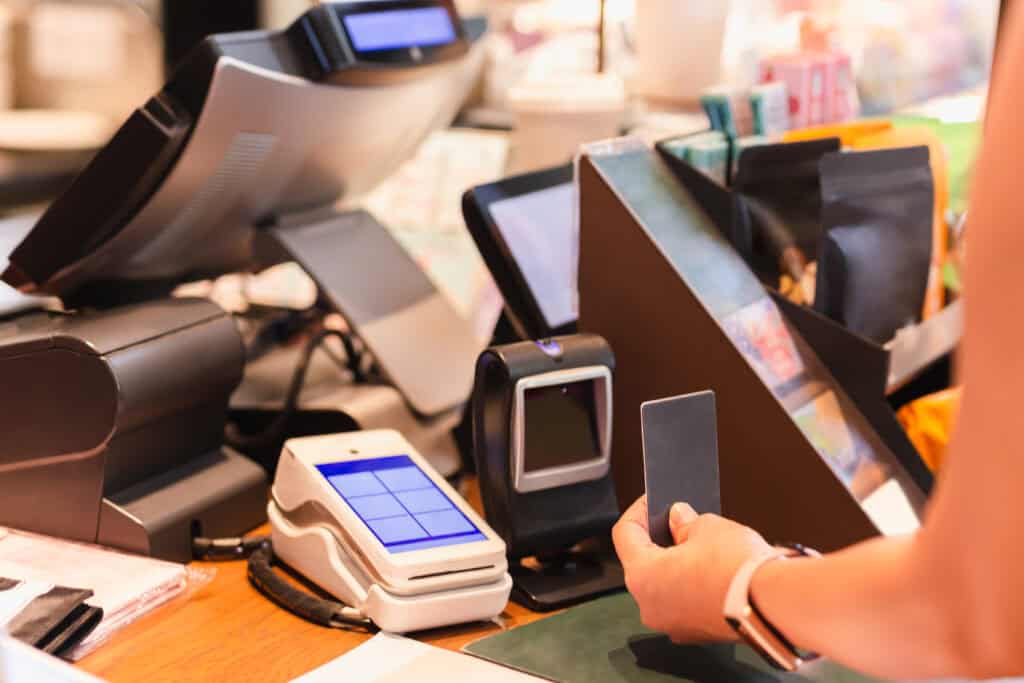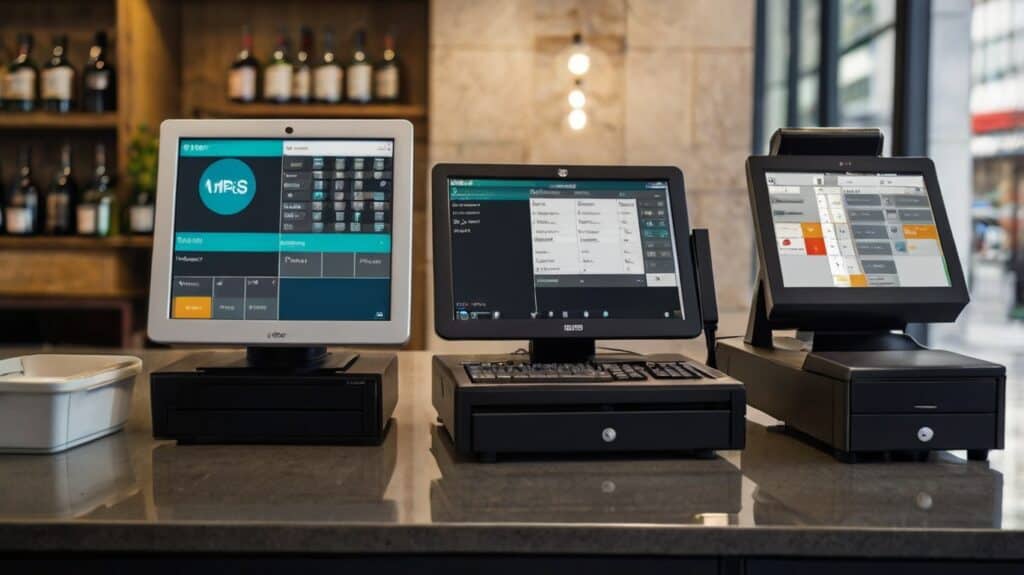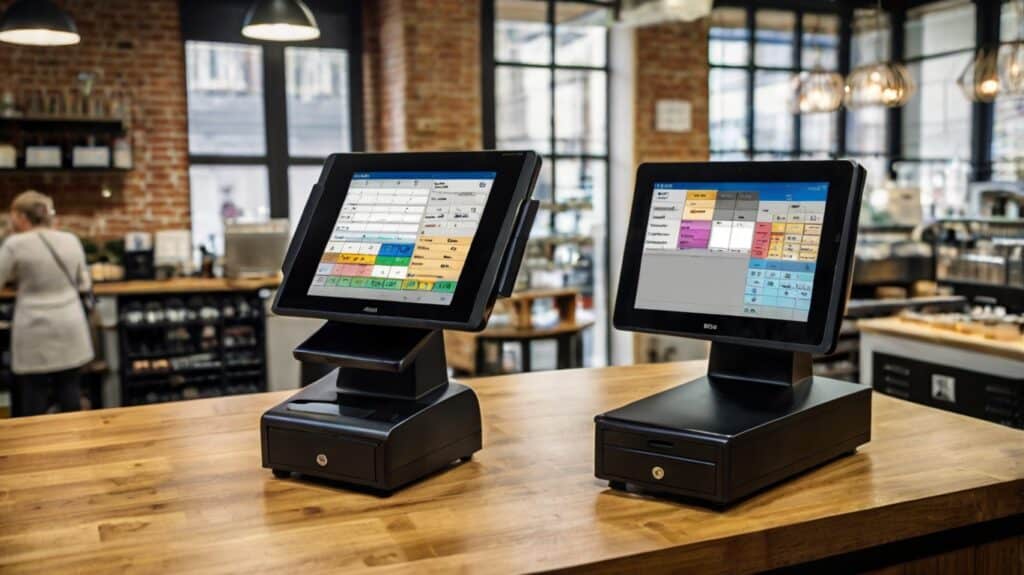
By alphacardprocess July 17, 2025
As a small business owner, you’re managing costs, and when you come across “free POS systems” term, it can sound like a dream come true. After all, retailers need a point-of-sale system to process payments, keep track of inventory, manage sales, and even take a pulse of customer behavior. But here’s the kicker: with many free POS systems, free is not really free. Most of them come with caveats, added costs or required upgrades as your business grows. Although you may have “free” access to a specific set of tools, enabling features like deep analytics, inventory syncing between different locations or custom receipts may come at a cost in the form of paid add-ons or additional monthly fees.
Sometimes, the free POS software is linked to the company’s payment processing services — where the actual cost comes in higher transaction fees. Others may cost extra for customer support or hardware or integrating with other third party apps.
This blog will help you look beyond the “free” label. We’ll break down what free POS systems typically include, what they leave out, and the pros and cons for small businesses. By the end, you’ll know how to assess whether a free POS is a smart deal or an expensive compromise in disguise.
What Is a Free POS System?
For the small business who hears “free POS system,” it can sound too good to be true! But knowing what “free” really means can help you make more savvy decisions.

Defining a Free POS System
Free POS systems are generally point of sale software that you can get at no upfront cost. Businesses may download or access this software to take transactions, keep simple inventory and track sales without paying a monthly fee.
Some of the most common ones include Square POS, Loyverse, and eHopper. Many of these systems are cloud-based, which makes them simple to install and compatible with tablets or smartphones. They are particularly attractive for small retail shops, cafes and for pop-up shops that require quick and affordable solutions.
Why Providers Offer It for Free?
So, how is it that POS providers are able to make money when the software is free?
The majority of these free POS systems are tied to the provider’s payment processing service, meaning you’re using its gateway and you’ll be paying transaction fees.
Others make money by selling hardware (like card readers or receipt printers) or by selling premium features (like employee management, loyalty programs or in-depth analytics). As your business scales, these paid add-ons can essentially turn a free system into a paid one.
So basically, appealing no-cost POS systems can actually be very decent starting points. But knowing what is included and not included is crucial.
What Do Free POS Systems Usually Include?
Free POS systems can seem like a steal, it’s good to know exactly what’s included — and what’s not — before signing up. Free POS systems are not there to protect or enhance your business, instead they serve to offer the minimum functionality you need to get started, so that you are more likely to upgrade as your business grows.
Core Features
The majority of free POS systems provide a strong core features to help small retailers manage daily needs:
- Simple sales processing: Receive payments by credit card, cash and mobile using the provider’s payment gateway.
- Product catalog: Add and categorize items, price, and assess sales by SKU or category.
- Basic inventory management: Keep track of how much inventory you have and receive alerts when the levels are low, though more advanced tools are frequently hidden behind a paywall.
- Customer database : Store names, emails and what users buy for basic customer relationship management.
These features are typically all that very small businesses, kiosks or first-time sellers need to get off the ground.

Platform Limitations
But there are limitations to free POS systems, that might limit your business as it scales:
- Limited users or registers: Some systems restrict the amount of employees or devices that can access the POS system at the same time.
- No third-party integrations: An integration like QuickBooks, Shopify or Mailchimp might need a paid upgrade.
- Limited customization options: Branded themes, custom receipts, and flexible tax settings are frequently locked behind paywalls.
Although free POS systems are great when you are just started, they often lack the scalability and nimbleness required for growing businesses. And knowing these limits can help prevent surprise costs later on.
The Real Costs Behind “Free” POS Systems
Although “free” POS systems claim no upfront software costs, you might encounter indirect or hidden fees. For small businesses running on particularly thin margins, it’s critical to know where these costs come in so you can make the best decisions.
Hardware Expenses
In many cases, while the software is free, you’ll still need the hardware to run your system. This includes:
- Tablets or touchscreen devices
- Receipt printers and cash drawers
- Barcode scanners for retail setups
Some providers like Square or Clover demand proprietary hardware, so you’ll have to buy through them. This potentially constrains flexibility, and can be cost-prohibitive to replace or scale.
Payment Processing Fees
This is how most free POS offers earn their money. For example:
- Square charges 2.6% + $0.10 per swipe
- Online or keyed-in transactions may cost more—up to 3.5% + $0.15
- You’re often locked into using one processor with no room for negotiation
And those fees pile up fast, especially for high-volume businesses. As opposed to premium full-service systems, you generally cannot compare offers for the best rates.
Add-On Features & Paid Upgrades
The free version generally includes only basic tools. If you want to grow or put your operations on a diet, you may also want to pay for:
- Advanced sales reporting and analytics
- Easiest way to manage employees (scheduling shifts, permissions)
- Ecommerce Integration to Sync Sales to E-store and Offline Sales
- Loyalty and CRM
These add-ons frequently are monthly fees or per-feature charges that make “free” a recurring cost.
Customer Support Charges
Support is another area where free systems cut corners. Most offer:
- Basic email or live chat only
- Slow response times and limited hours of business
- Phone or 24/7 support is usually part of an upgraded subscription
Delayed support can mean losing real money in lost sales when your system goes down on a busy weekend.
Limitations of Free POS Systems
Free POS systems can be a fantastic option for many small businesses, but there are often limitations to its use that become apparent as your business grows. Knowing these weaknesses can aid in deciding whether, or when, to progress to a more complete approach.

Scalability Issues
The majority of free POS systems are not designed to help multi-location businesses, massive inventories or growing teams. When you start hiring more people or scaling your product offerings, you might hit limits with user accounts, devices or features.
Data Portability and Access
Free POS systems can limit how easily you can export customer and sales data. The process of transferring your business to a new platform can lead to headaches when you’re ready to scale and includes potential delays, manual work or even fees you weren’t expecting.
Branding and Control
Some free platforms may add their own logos to receipts, checkout pages, or email communications. This can impact how professional your business looks, and can also hinder the level of control you have over the customer experience.
Security Concerns
Although there is typically some sort of basic encryption, there might not be the high-level security tools, such as PCI compliance tools, fraud detection modules, or two-factor authentication, that are included with many paid systems. That means your transactions and customers are more exposed.
So, free POS systems can get the job done but when you want to grow or take things more seriously, you’ll likely need to invest in more powerful tools.
When to Upgrade to a Paid POS Solution?
If your business is booming or you’re anticipating scaling in the near future, you may benefit from paid POS systems, which comes with the capabilities and flexibility you need for that growth. Here’s when you should consider switching.

Business Growth
After you open new locations, or add more employees, you will want multi-user access, admin permissions and centralized reporting. Free systems rarely can accept this level of complexity without expensive modifications.
Advanced Features
If you’re ready to move up into ecommerce, or you want your POS to connect with accounting, inventory management, or marketing software, you’ll generally need a paid system. Premium plans also include custom analytics and forecasts.
Payment Flexibility
Free POS systems usually force you to use their company’s in-house processor at fixed rates. A paid POS might also give you the flexibility to choose your own payment processor — something that can help you negotiate rates and ultimately save you money over time.
Brand Control and Customer Experience
Premium plans let you fully customize receipts, checkout screens, email templates, and customer interactions. This makes your brand look polished and consistent across touchpoints—something free tools don’t offer.
If you come across any of these limitations, upgrading can mean you don’t lose efficiency or miss potential sales as your business becomes more complex.
Conclusion
A free POS system can be a great starting point—especially for solo entrepreneurs, pop-up vendors, or very small businesses with simple needs. It offers core functionality like sales tracking and inventory management without upfront software fees.
However, “free” often comes with trade-offs. You may face limits on users, integrations, customer support, and branding. Plus, hidden costs—like payment processing fees, hardware requirements, or premium add-ons—can add up quickly.
As your business grows, you’ll need more than just the basics. That’s when investing in a paid POS system becomes essential. It gives you access to advanced tools, better payment flexibility, and full control over your customer experience.
In short, free POS software isn’t a scam—but it’s rarely a long-term solution. Know what you’re getting, plan for growth, and upgrade when it makes strategic sense.
Frequently Asked Questions
1. Are free POS systems really free?
Yes, the software itself is often free, but you may still pay for hardware, payment processing, or advanced features.
2. Can I use my own payment processor with a free POS?
Usually not. Most free POS platforms lock you into their processing service, which may have higher fees.
3. Are free POS systems safe for customer data?
They typically offer basic security, but may lack advanced fraud protection, PCI tools, or encryption layers found in paid versions.
4. What happens if I outgrow a free POS system?
You may need to upgrade to a paid plan or switch providers entirely. Some platforms offer smooth transitions, while others make data migration difficult.
5. Who should use a free POS system?
They’re ideal for very small businesses, pop-up shops, or startups testing the market. But growing or multi-location businesses usually need a more scalable, paid solution.
Leave a Reply